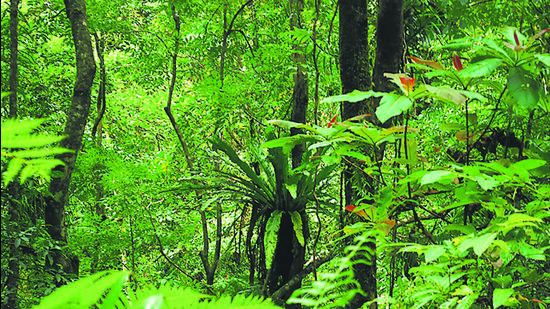Centre seeks contractors’ interest for contentious Great Nicobar project
ANIIDCO has begun the process for the selection of contractors who will carry out “enumeration, felling, logging, and transportation” of trees as part of the Great Nicobar development project.
The Andaman and Nicobar Islands Integrated Development Corporation Limited (ANIIDCO) has begun the process for the selection of contractors who will carry out “enumeration, felling, logging, and transportation” of trees as part of the Great Nicobar development project, a move that has renewed concerns over a controversial project.

The ANIIDCO invited expressions of interest (EOI), an administrative step that is a precursor for the clearing of 64.76 square kilometres of forest, raising alarm among environmentalists concerned about the island’s rare species and pristine rainforests.
ANIIDCO officials downplay immediate concerns, stating, “Tree enumeration is not tree felling. The process is to begin with enumeration”.
The project, which includes plans for an international container transhipment terminal, a greenfield airport, and power plants, requires the diversion of 130.75 square kilometres of forest land. Tree felling is set to be carried out in phases between 2025 and 2047, with the first phase targeting 9.26 square kilometres.
The project has faced staunch opposition due to its potential effects on Great Nicobar’s endemic species, rainforests, and tribal population. Environmental activist Ashish Kothari has filed petitions in the National Green Tribunal and Kolkata High Court, based on a report by a high-powered committee formed following an NGT order.
Despite these concerns, the government is pushing forward, citing the island’s strategic importance. “The holistic development of Great Nicobar Island project is a project of National Importance in view of its Strategic, Security and Socio-Economic benefits,” ANIIDCO stated in its call for expressions of interest.
The ministry of environment, forest and climate change (MoEFCC) granted stage-I forest clearance for the project in October 2022, followed by environmental and coastal regulation zone clearance in November 2022. The clearances came with conditions, including the retention of 65.99 square kilometres as “green” area and phased tree felling.
The environmental clearance came with specific conditions aimed at mitigating the project’s ecological impact. These include the creation of sanctuaries, translocation of coral colonies, and the establishment of wildlife corridors. Eight wildlife corridors have been proposed along the eastern side of the island, connecting the forest to the seashore through viaducts in the north-south arterial road. These are intended to facilitate the movement of wildlife, including arboreal animals, snakes, crabs, and crocodiles.
However, the clearance also notes that “the impact of the project on these species is mostly unknown”.
But among the most controversial is how compensatory afforestation will be done: The forest loss in Great Nicobar is planned to be made up for in Haryana’s Aravallis, thousands of kilometres away. Congress leader Jairam Ramesh criticised this decision in a letter to Union environment minister Bhupender Yadav last month, stating, “Compensatory afforestation, which is no substitute whatsoever for the loss of natural biodiversity rich forests, is being planned thousands of kms away and in a vastly different ecology”.
Yadav defended the project, emphasising that “exemplary mitigation measures” have been incorporated to minimise environmental impact, “keeping the strategic, national and defence interests” in mind.
“It is shocking that whilst legal challenges to these environmentally disastrous and economically unviable projects are pending in various Courts, the Government is spending public money on an exercise in futility. The Government must make public the High Powered Committee Report before any work is carried out for these projects,” said Debi Goenka, Executive Trustee, Conservation Action Trust.






